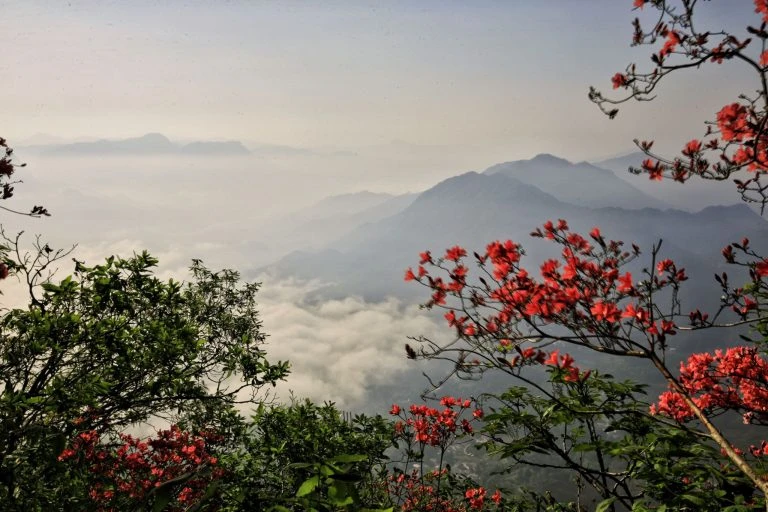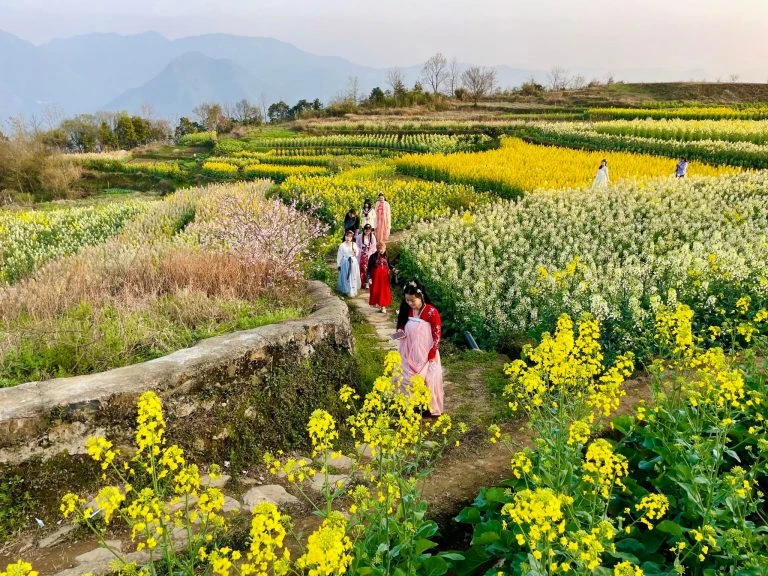The Valley of Flowers, nestled in the Western Himalayas, is a paradise for nature lovers, trekkers, and botanists. This UNESCO World Heritage site, located in the state of Uttarakhand, India, is famed for its meadows filled with endemic flora and stunning landscapes. Starting your journey from Delhi, the trek to the Valley of Flowers is a blend of adventure, spirituality, and natural beauty. Here’s a detailed guide to help you plan this remarkable trek.
I. Introduction
The Valley of Flowers trek is a haven of vibrant colors and pristine beauty. Every year, thousands of enthusiasts flock to this region to witness its blooming spectacle, which is at its peak during the monsoon months. The trek not only offers a visual treat but also a chance to explore the rich biodiversity and serene landscapes of the Himalayas.

II. Planning Your Trip
Best Time to Visit: The Valley of Flowers is accessible from June to early October, with the best time being July and August when the flowers are in full bloom.
Required Permits and Permissions: Trekkers need to obtain a permit from the Forest Department, available at the entry point in Ghangaria. Indian nationals need to pay a nominal fee, while foreign nationals are charged slightly more.
Physical Fitness and Preparation: This trek, though moderate, requires a good level of fitness. Regular cardio exercises, strength training, and practice treks can help in preparation.
Packing Essentials:
- Trekking shoes with good grip
- Rain gear and waterproof clothing
- Warm clothes, as temperatures can drop significantly
- Basic first aid kit and personal medications
- High-energy snacks and hydration packs
III. Getting to the Valley of Flowers
From Delhi to Haridwar/Rishikesh:
The journey begins with an overnight train or bus ride from Delhi to Haridwar or Rishikesh. Trains like the Nanda Devi Express offer a comfortable overnight journey.
Haridwar/Rishikesh to Govindghat:
From Haridwar or Rishikesh, you can hire a taxi or take a bus to Govindghat. The journey, approximately 10-12 hours long, offers picturesque views of the Garhwal Himalayas.
Govindghat to Ghangaria:
The trek starts from Govindghat, a small town located at the confluence of the Alaknanda and Lakshman Ganga rivers. A 14 km trek or mule ride along a well-maintained path brings you to Ghangaria, the base camp for the Valley of Flowers.
IV. Flora and Fauna

The Valley of Flowers is renowned for its rich biodiversity. During the peak blooming season, you can witness over 300 species of flowers, including the rare Blue Poppy, Brahma Kamal, and Cobra Lily. The valley is also home to various species of butterflies, birds, and small mammals. While trekking, you might spot Himalayan black bears, snow leopards, musk deer, and red foxes in the surrounding areas.
Photography Tips:
- Use a macro lens to capture detailed shots of flowers.
- Morning and late afternoon light provide the best conditions for photography.
- Be patient and respect the natural habitat to avoid disturbing wildlife.
V. Accommodation and Food
Lodging Options in Ghangaria:
Ghangaria offers a range of accommodation options, from budget guesthouses to more comfortable hotels. Tented camps are also available for those seeking a closer connection with nature. It is advisable to book in advance during the peak season.
Food and Drink Availability:
The small eateries and dhabas in Ghangaria and along the trekking route serve simple vegetarian meals, including North Indian dishes like parathas, rice, dal, and vegetables. It is recommended to carry some energy bars, dry fruits, and hydration packs for the trek.
Tips for Staying Healthy and Hydrated:
- Drink plenty of water to stay hydrated, especially at higher altitudes.
- Avoid consuming untreated water from streams; carry purification tablets or a portable water filter.
- Eat light, nutritious meals to maintain energy levels during the trek.
VI. Cultural and Spiritual Significance
Importance of Hemkund Sahib:
For those seeking a spiritual experience, a visit to Hemkund Sahib, located near the Valley of Flowers, is highly recommended. This revered Sikh Gurudwara is situated at an altitude of 4,329 meters and is accessible via a steep 6 km trek from Ghangaria. The crystal-clear Hemkund Lake, surrounded by seven snow-capped peaks, adds to the serene ambiance.
Local Culture and Traditions:
The region is inhabited by the Bhotiya people, who have a rich cultural heritage and follow unique traditions. Interacting with the locals provides insight into their way of life, customs, and folklore. Supporting local businesses and buying handicrafts can help sustain their economy.
VII. Safety and Environmental Responsibility
Safety Tips for Trekkers:
- Acclimatize properly to avoid altitude sickness.
- Trek in groups and avoid venturing off the marked trails.
- Carry a basic first aid kit and be aware of emergency procedures.
Environmental Conservation:
The Valley of Flowers is a protected area, and it\'s crucial to minimize your environmental impact. Follow the principle of "Leave No Trace" by carrying back all your waste, avoiding the use of plastic, and respecting the local flora and fauna.
Responsible Trekking Practices:
- Stay on designated paths to prevent soil erosion.
- Avoid picking flowers or disturbing wildlife.
- Support sustainable tourism by choosing eco-friendly accommodations and tour operators.
VIII. Conclusion
The Valley of Flowers trek from Delhi is a journey of a lifetime, offering a blend of natural beauty, adventure, and cultural richness. Proper planning and preparation can ensure a safe and enjoyable experience. Whether you are a seasoned trekker or a nature enthusiast, this trek promises an unforgettable adventure in one of the most beautiful regions of the Himalayas. Respect for nature and local traditions will not only enhance your experience but also help preserve this pristine paradise for future generations.


